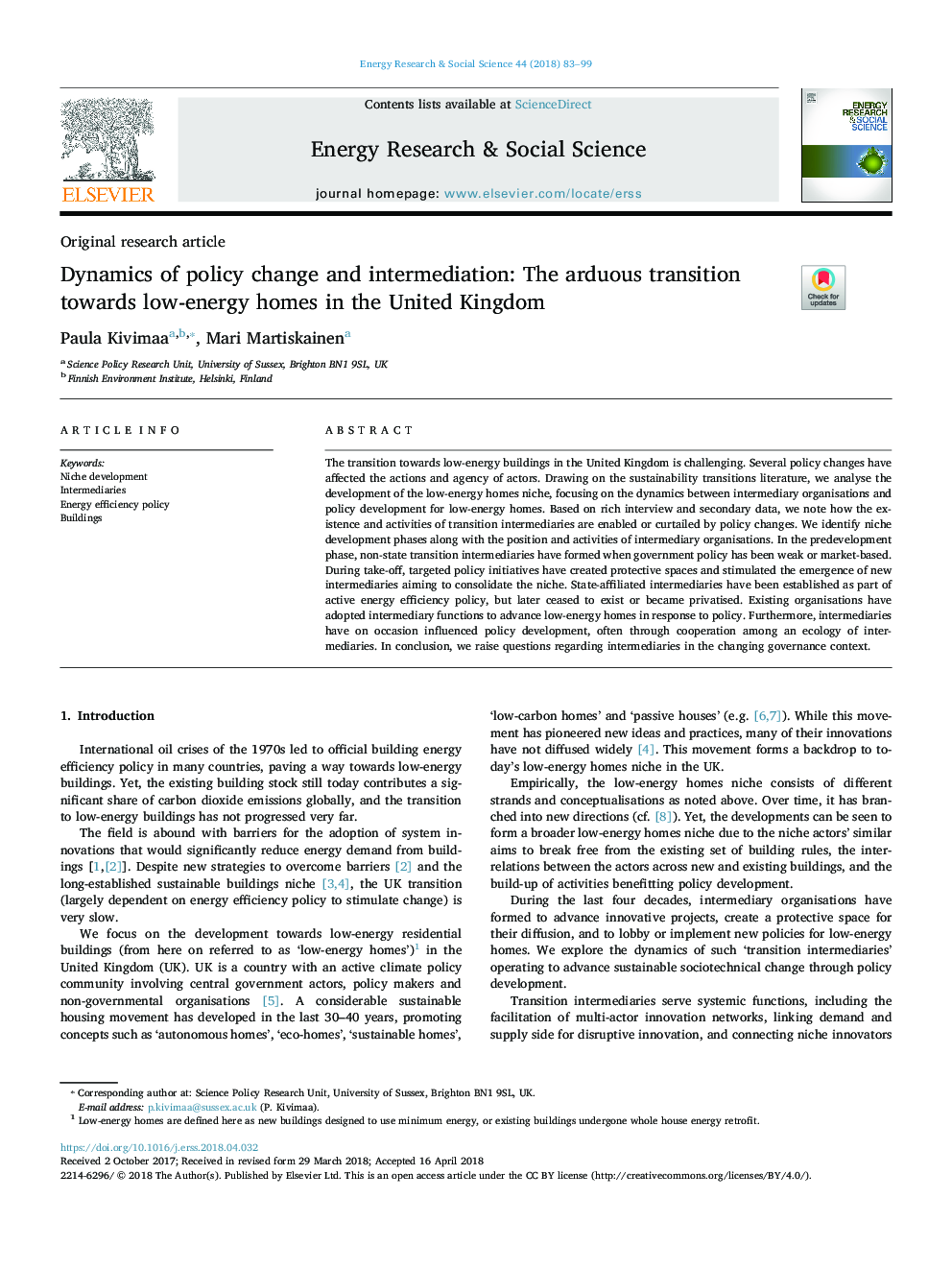| Article ID | Journal | Published Year | Pages | File Type |
|---|---|---|---|---|
| 6557204 | Energy Research & Social Science | 2018 | 17 Pages |
Abstract
The transition towards low-energy buildings in the United Kingdom is challenging. Several policy changes have affected the actions and agency of actors. Drawing on the sustainability transitions literature, we analyse the development of the low-energy homes niche, focusing on the dynamics between intermediary organisations and policy development for low-energy homes. Based on rich interview and secondary data, we note how the existence and activities of transition intermediaries are enabled or curtailed by policy changes. We identify niche development phases along with the position and activities of intermediary organisations. In the predevelopment phase, non-state transition intermediaries have formed when government policy has been weak or market-based. During take-off, targeted policy initiatives have created protective spaces and stimulated the emergence of new intermediaries aiming to consolidate the niche. State-affiliated intermediaries have been established as part of active energy efficiency policy, but later ceased to exist or became privatised. Existing organisations have adopted intermediary functions to advance low-energy homes in response to policy. Furthermore, intermediaries have on occasion influenced policy development, often through cooperation among an ecology of intermediaries. In conclusion, we raise questions regarding intermediaries in the changing governance context.
Related Topics
Physical Sciences and Engineering
Energy
Energy (General)
Authors
Paula Kivimaa, Mari Martiskainen,
